COURSE OUTLINE
| Instructor: |
Dr. Ewa Wasilewska, Associate Professor/Lecturer, Dept. of Anthropology. |
| Contact information: |
Office: Stewart 101. By
appointment only.
Office phone: 801-581-6251. Please call between 8:00 a.m. and 5:00 p.m. and leave your name and a phone number so the instructor can call you back. Telephone appointments are acceptable.
Home phone: 801-596-3105. For emergencies only unless a telephone appointment is arranged.
Email: Mruczek@AOL.com
|
| Time: |
Mondays and Wednesdays: 11:50 a.m. to 1:10 p.m. |
| Location: |
ST 208 |
| Course description: |
The turmoil of Middle Eastern life has its roots in ideas and lifestyles developed over thousands of years. This course examines the land and people, analyzing the role of ethnicity, religion, politics, economics, and values in every day behavior. |
| Disclaimer |
Some of the writings, lectures, films, or presentations in this course may include material that conflicts with the core beliefs of some students. Please review the syllabus carefully to see if the course is one that you are committed to taking. |
| Teaching and Learning Methods |
This course is a combination of lectures, discussions, and video presentations. While each meeting will be illustrated with various visual aids, students will be advised to search for additional visual material to better comprehend the discussed topics. While students are encouraged to initiate and participate in all discussions, they must remain respectful of all classmates and the professor. |
Evaluation Methods |
This course requires patience and a lot of tolerance. Students are expected to:
- Attend class meetings.
- Do their readings in advance so they can fully participate in any discussions. The readings based participation may impact your grade.
- Take all required exams on time. Upon a valid request, special arrangements might be made with the professor (e.g., a different exam date).
- Complete and turn on time their papers.
- Offer their opinions and argue their points. All must be done in good and edited English.
- NO PLAGIARISM OR CHEATING IN ANY SHAPE OR FORM.
|
Exams, Assignments and Grades: |
Two in-class exams and a term paper are planned. However, in the event of an expansion of some topics due to students’ interest and/or current affairs, any in-class exam might be replaced with a take-home exam. Students will be graded 1/3 for each exam, 1/3 for a term paper – a student’s independent research on a topic of his/her choice (of course, relevant to the class) but approved by the professor.
There won’t be any extra-credit assignments in this class. Each exam and/or assignment and/or paper will be graded using the Letter-Grade scale (“A” as the highest, “E” as the lowest [no-pass] grade). The final grade will be calculated accordingly by setting up values of the Letter-Grade scale using the 4-Point scale.
The required length of the research paper/essay is 10 pages plus bibliography. The bibliography must include at least 4 additional (to the class material) sources such as scholarly articles and/or books. Internet sources such as Wikipedia are not acceptable. Basic guidelines for writing a college paper can be found at http://www.collegeboard.com/student/plan/college-success/10358.html
You, as a student, are responsible for making sure that your proper email is registered with the University of Utah.
|
Required Readings: |
All required articles, chapters from different books, etc., are listed under specific topics discussed during the semester. All of them are available at Marriott Library Reserve Desk through electronic reserve or as hard copies.
|

WEEK
# 1 - August 26 & 28, 2013
INTRODUCTION: THE MIDDLE EAST, BACKROUND, HISTORY AND ECOLOGY.
Readings for Week #1:
Eickelman, D.F. (2002): Part 1. Introduction.
Chapter 1: Anthropology, the Middle East and Central Asia.
Chapter 2: Intellectual Predecessors: East and West.
In The Middle East and Central Asia. An Anthropological Approach. Fourth Edition. Upper Saddle River, New Jersey: Prentice Hall. Pp. 1-43.
|
 |
|
WEEK
# 2 - September 2 (no class -- Labor Day!) & 4, 2013
RELIGION: ZOROASTRIANISM, JUDAISM, CHRISTIANITY, ISLAM.
Readings for Week #2:
Kronen, J. D. & S. Menssen (2010): The Defensibility of Zoroastrian Dualism. In Religious Studies 46. Pp. 185–205.
Sherwood, Y. (2004): Binding-Unbinding: Divided Responses of Judaism, Christianity and Islam to the “Sacrifice” of Abraham’s Beloved Son. In Journal of the American Academy of Religion. Vol. 72 (4). Pp. 821-861.
Stepaniants, M. (2002): The Encounter of Zoroastrianism with Islam. In Philosophy East and West. Vol. 52, No. 2. Pp. 159-172.
|
 |
|
WEEK
# 3 - September 9 & 11, 2013
MINORITIES AND THE ETHNIC MOSAIC. PART 1.
Readings for Weeks #3 & 4:
Loeb, L. (1999): Jewish-Muslim Socio-Political Relations in Twentieth Century South Yemen. In Judeo-Yemenite Studies. Pp. 71-99.
Kumaraswamy P. R. (2007): Islam and Minorities: Need for a Liberal Framework. In
Mediterranean Quarterly 18:3. Pp. 94-109.
Ma’oz, M. (2002): Middle Eastern Minorities: Between Integration and Conflict – An Overview. In Middle Eastern Diasporas and Minorities. Edited by Moshe Ma’oz & Gabriel Sheffer. Sussex: Academic Press. Pp. 29-40.
Sheffer, G (2002): Middle Eastern Diasporas – An Overview. In Middle Eastern Diasporas and Minorities. Edited by Moshe Ma’oz & Gabriel Sheffer. Sussex: Academic Press. Pp. 195-218. |
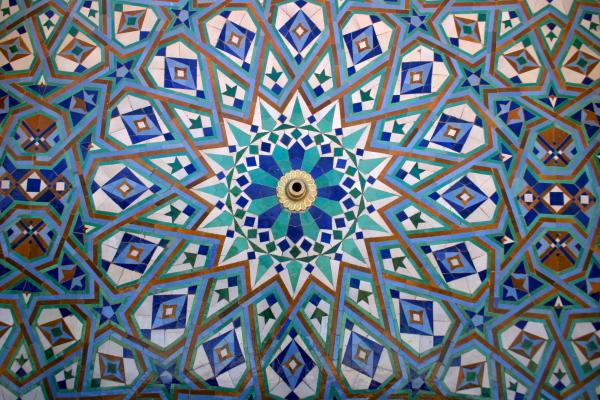 |
|
WEEK
# 4 - September 16 & 18, 2013

MINORITIES AND THE ETHNIC MOSAIC. PART 2.
Readings for Week #4: see above.
WEEK
# 5 - September 23 & 25, 2013
ECONOMIC BEHAVIOR AND SUBSISTENCE: PASTORAL NOMADISM.
Readings for Week #5:
Barfield, T. J. (1993): 1. Introduction (pp. 1-18). 4. The Good Shepherds: Pastoral Tribes of Southwest Asia (pp. 93-130). 5. The Horse Riders: Nomads of the Eurasian Steppe (pp. 131-179). In The Nomadic Alternative. Prentice Hall. London. 1993.
Sweet, L. E. (1965): Camel Raiding of North Arabian Bedouin: A Mechanism of Ecological Adaptation. In American Anthropologist 67 (5). Pp. 1132-1150.
|
|
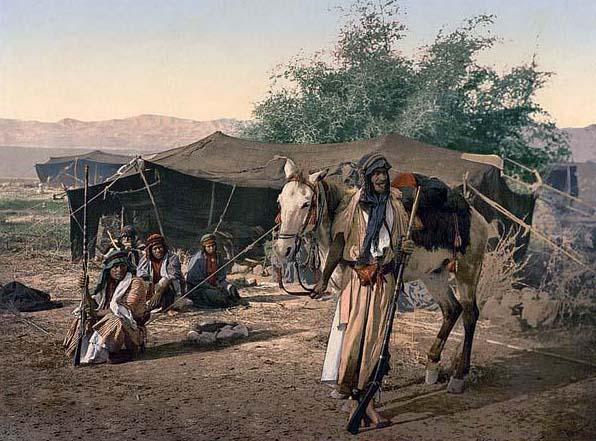 |
WEEK
# 6- September 30 & October 2, 2013
ECONOMIC BEHAVIOR AND SUBSISTENCE: VILLAGE LIFE.
Readings for Week #6:
Coles, Roberta (2001): Elderly Narrative Reflections on the Contradictions in Turkish Village Family Life after Migration of Adult Children. In Journal of Aging Studies, Volume 15, No. 4 (December 2001), online at: http://dx.doi.org/10.1016/S0890-4065(01)00030-5
Johnson, W. (1995): Keeping Cool. In Aramco World 46 (3). Pp. 10-17.
Salih, Tayeh (2002): The Doum Tree of Wadi Hamid. In Every Day Life of Muslim Middle East. Edited by Donna Lee Bowen and Evelyn E. Early. Bloomington and Indianapolis: Indiana University Press. Pp. 159-168.
|
|
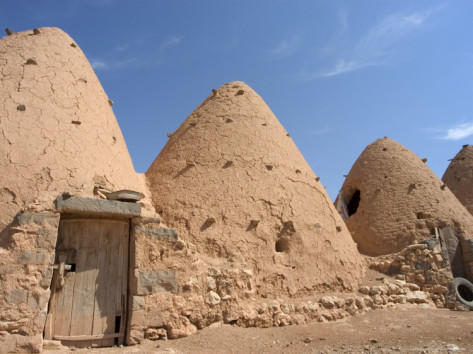 |
WEEK
# 7 - October 7 & 9, 2013
ECONOMIC BEHAVIOR AND SUBSISTENCE: URBAN LIFE.
Readings for Week #7:
Abu-Lughod, Janet L. (1987): The Islamic City--Historic Myth, Islamic Essence, and Contemporary Relevance. In International Journal of Middle East Studies. Vol. 19, No. 2. Pp. 155-176.
Ossman, Susan (2002): Fashioning Casablanca in the Beauty Salon. In Every Day Life in the Muslim Middle East. Edited by Donna Lee Bowen and Evelyn E. Early. Bloomington and Indianapolis: Indiana University Press. Pp. 180-188.
Singerman, Diane (2002): Networks, Jobs, and Everyday Life in Cairo. In Every Day Life in the Muslim Middle East. Edited by Donna Lee Bowen and Evelyn E. Early. Bloomington and Indianapolis: Indiana University Press. Pp. 199-208.
|
|

|
WEEK
# 8 - October 14 & 16, 2013
WEEK
# 9 - October 21 & 23, 2013
WEEK
# 10 - October 28 & 30, 2013
MARKETING, BARGAINING AND RECIPROCITY.
Readings for Week #10:
Benet, F. (1957): Explosive Markets: The Berber Highlands. In Trade and Markets in Early Empires. Edited by K. Polanyi et al. Glencoe: The Free Press. Pp. 188-217. Reprint pp. 173-203.
Khuri, Fuad. (1968): The Etiquette of Bargaining in the Middle East. In American Anthropologist, New Series, Vol. 70, No. 4. Pp. 698-706.
Pinto, Paulo G. (2007): Pilgrimage, Commodities, and Religious Objectification: The Making of Transnational Shiism between Iran and Syria. In Comparative Studies of South Asia, Africa and the Middle East, Volume 27, Number 1. Pp. 109-125.
|
|
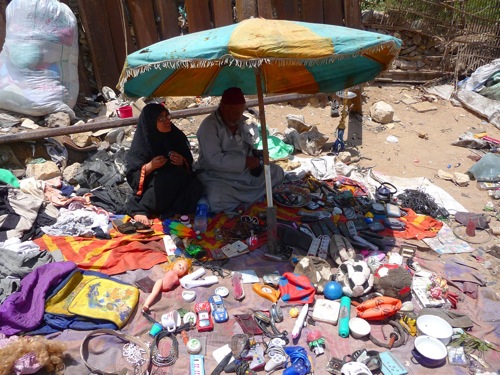 |
WEEK
# 11 - November 4 & 6, 2013
MARRIAGE AND KINSHIP.
Readings for Week #11:
Chatty, Dawn (2002): Harasiis Marriage, Divorce and Companionship. In Every Day Life in the Muslim Middle East. Edited by Donna Lee Bowen and Evelyn E. Early. Bloomington and Indianapolis: Indiana University Press. Pp. 120-127.
Sholkamy, Hania (2008): Why kin marriage? Rationales in rural Upper Egypt. In Family in the Middle East: Ideational Change in Egypt, Iran and Tunisia. Edited by Kathryn M. Yount & Hoda Rashad. Routledge. Pp. 139-150.
White, J. (2002): Two Weddings. In Every Day Life in the Muslim Middle East. Edited by Donna Lee Bowen and Evelyn E. Early. Bloomington and Indianapolis: Indiana University Press. Pp. 63-77. |
|
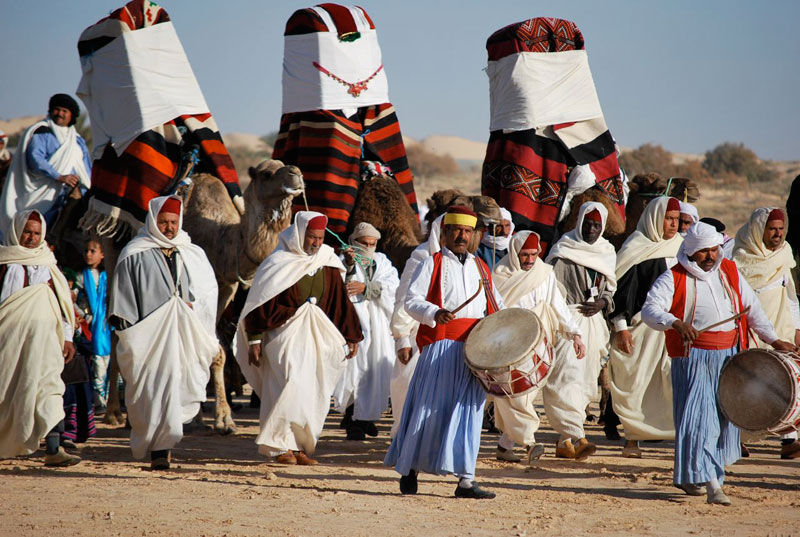 |
WEEK 12 - November 11 & 13, 2013
GENDER AND FAMILY.
Readings for Week #12:
Cuisenier, Jean (1976): The domestic cycle in the traditional family organization in Tunisia. In Mediterranean Family Structures. Edited by J.G. Peristiany. Cambridge University Press. Pp. 137-155.
Haeri, Shahla (1986): Power of Ambiguity: Cultural Improvisations on the Theme of Temporary Marriage. In Iranian Studies, Vol. 19 (2). Pp. 123-154.
Hamzic, Vanja: The Case of ‘Queer Muslims’: Sexual Orientation and Gender Identity in International Human Rights Law and Muslim Legal and Social Ethos. In Human Rights Law Review 11:2. Pp. 237-274.
Wikan, Unni (1977): Man Becomes Woman: Transsexualism in Oman as a Key to Gender Roles. In Man, New Series, Vol. 12, No. 2. Pp. 304-319. |
|
 |
WEEK
# 13 - November 18 & 20, 2013
SOCIAL AND POLITICAL CONTROL.
Readings for Week #13:
Abbasi-Shavazi, M.J., McDonald, P. & M. Hossein-Chavoshi (2008): The family and social change in post-revolutionary Iran. In Family in the Middle East: Ideational Change in Egypt, Iran and Tunisia. Edited by Kathryn M. Yount & Hoda Rashad. Routledge. Pp. 217-235.
Alley, April Longley (2010): The Rules of the Game: Unpacking Patronage Politics in Yemen. In The Middle East Journal, Volume 64, Number 3. Pp. 385-409.
Bates, D.G. & A. Rassam (2001): Local Organization of Power: leadership, Patronage, and tribalism. In Peoples and Cultures of the Middle East. Prentice Hall. Pp. 251-277.
Hamad, Hanan (2011): Between Egyptian "National Purity" and "Local Flexibility": Prostitution
in al-Mahalla al-Kubra in the First Half of the 20th c. In Journal of Social History, Volume 44, Number 3. Pp. 751-783.
|
|
 |
WEEK
# 14 - November 25 & 27, 2013
VALUES AND WORLD VIEW.
Readings for Week #14:
Cuno, K.M. (2008): Divorce and the fate of the family in modern century Egypt. In Family in the Middle East: Ideational Change in Egypt, Iran and Tunisia. Edited by Kathryn M. Yount & Hoda Rashad. Routledge. Pp. 196-216.
Labidi, Lilia (2008): From sexual submission to voluntary commitment. The Transformation of family ties in contemporary Tunisia. In Family in the Middle East: Ideational Change in Egypt, Iran and Tunisia. Edited by Kathryn M. Yount & Hoda Rashad. Routledge. Pp. 236-250.
Latreille, Martin (2008): Honor, the Gender Division of Labor, and the Status of Women in Rural Tunisia – A Social Organizational Reading. In Int. J. Middle East Stud. 40. Pp. 599–621.
Lindholm, Charles (1982): The Code of Honor. The Friendship Ideal. In Generosity and Jealousy. The Swat Pukthun of Northern Pakistan. New York: Columbia University Press. Pp.209-238. Pp. 239-273.
Murphy, Robert T. (1970): Social Distance and the Veil [Tuareg]. In Peoples and Cultures of the Middle East. Vol.1: Depth and Diversity. Edited by Louise E. Sweet. Garden City, New York: The Natural History Press. Pp. 290-314. |
|
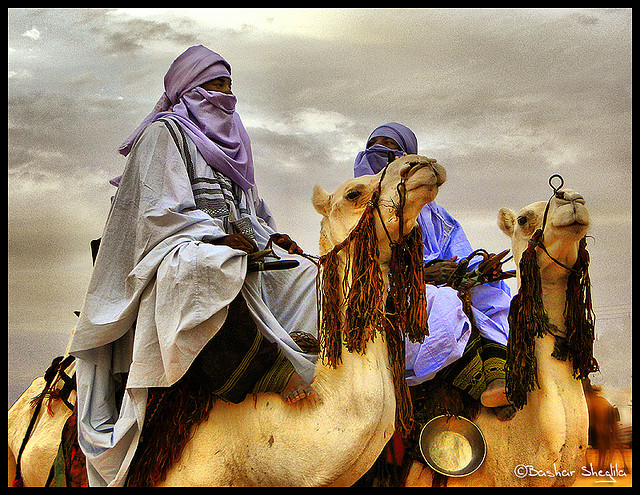  |
WEEK
# 15 - December 2 & 4, 2013
TASTE, AESTHETICS AND THE ARTS.
Readings for Week #15:
Chahabi, H.E. (2003): The Westernization of Iranian Culinary Culture. In Iranian Studies, Vol. 36 (1). Pp. 43-61.
Naef. S. (2003): Reexploring Islamic Art: Modern and Contemporary Creation in the Arab World and Its Relation to the Artistic Past. In Anthropology and Aesthetics, No. 43, Islamic Arts. Pp. 164-174.
Ossman, Susan (2007): Cinderella, CVs, and Neighborhood Nemima : Announcing Morocco's
Royal Wedding. In Comparative Studies of South Asia, Africa and the Middle East, Volume
27, Number 3. Pp. 525-535.
|
|
 |
WEEK
# 16 - December 9 & 11, 2013
SOCIAL CHANGE AND DEVELOPMENT.
Readings for Week #16:
El Tawila, S.’ Ibrahim, B. & Hind Wassef (2008): Social change and parent-adolescent dynamics in Egypt. In Family in the Middle East: Ideational Change in Egypt, Iran and Tunisia. Edited by Kathryn M. Yount & Hoda Rashad. Routledge. Pp. 151-170.
Kumaraswamy, P. R. (2006): The Middle East: Unbearable Status Quo versus Unpredictable
Changes. In Mediterranean Quarterly, Volume 17, Number 1. Pp. 116-132.
Rosen, L. (2003): Have the Arabs Change Their Mind? In The Culture of Islam: Changing Aspects of Contemporary Muslim Life. The University of Chicago Press. Pp. 108-129.
Vodanovich, S., Urguhart, C. & M. Shakir (2010): Same but Different: Understanding Women’s Experience of ICT in the UAE. In EJISDC 40 (4). Pp. 1-21
Last day to turn in your paper!
|
|
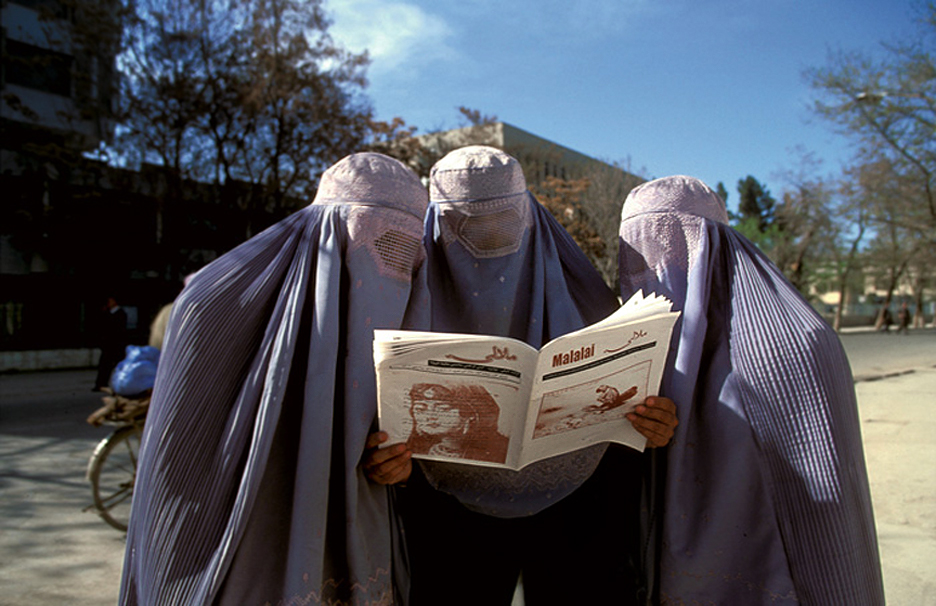  |
WEEK
# 17 - December 19, 2013
 |
|
10:30 a.m. to 12:30 p.m.
EXAM #2!
|
|
 |
 IMPORTANT!!! IMPORTANT!!!
ADA Statement:
“The University of Utah seeks to provide equal access to its programs, services and activities for people with disabilities. If you will need accommodations in the class, reasonable prior notice needs to be given to the Center for Disability Services, 162 Union Building, 581-5020 (V/TDD). CDS will work with you and the instructor to make arrangements for accommodations.” (www.hr.utah.edu/oeo/ada/guide/faculty)
Faculty Responsibilities:
“All students are expected to maintain professional behavior in the classroom setting, according to the Student Code, spelled out in the Student Handbook. Students have specific rights in the classroom as detailed in Article III of the Code. The Code also specifies proscribed conduct (Article XI) that involves cheating on tests, plagiarism, and/or collusion, as well as fraud, theft, etc. Students should read the Code carefully and know they are responsible for the
content. According to Faculty Rules and Regulations, it is the faculty responsibility to enforce responsible classroom behaviors, and I will do so, beginning with verbal warnings and progressing to dismissal from and class and a failing grade. Students have the right to appeal such action to the Student Behavior Committee.” (www.admin.utah.edu/ppmanual/8/8-12-4.html)
ACADEMIC MISCONDUCT
Please familiarize yourself with the University of Utah CODE OF STUDENT RIGHTS AND RESPONSIBILITIES (“STUDENT CODE”) at www.admin.utah.edu/ppmanual//8/8-10.html
The following is an excerpt from this CODE explaining specific actions, which won’t be tolerated in this class.
“2. “Academic misconduct” includes, but is not limited to, cheating, misrepresenting one's work, inappropriately collaborating, plagiarism, and fabrication or falsification of information, as defined further below. It also includes facilitating academic misconduct by intentionally helping or attempting to help another to commit an act of academic misconduct.
a. “Cheating” involves the unauthorized possession or use of information, materials, notes, study aids, or other devices in any academic exercise, or the unauthorized communication with another person during such an exercise. Common examples of cheating include, but are not limited to, copying from another student's examination, submitting work for an in-class exam that has been prepared in advance, violating rules governing the administration of exams, having another person take an exam, altering one's work after the work has been returned and before resubmitting it, or violating any rules relating to academic conduct of a course or program.
b. Misrepresenting one's work includes, but is not limited to, representing material prepared by another as one's own work, or submitting the same work in more than one course without prior permission of both faculty members.
c. “Plagiarism” means the intentional unacknowledged use or incorporation of any other person's work in, or as a basis for, one's own work offered for academic consideration or credit or for public presentation. Plagiarism includes, but is not limited to, representing as one's own, without attribution, any other individual’s words, phrasing, ideas, sequence of ideas, information or any other mode or content of expression.
d. “Fabrication” or “falsification” includes reporting experiments or measurements or statistical analyses never performed; manipulating or altering data or other manifestations of research to achieve a desired result; falsifying or misrepresenting background information, credentials or other academically relevant information; or selective reporting, including the deliberate suppression of conflicting or unwanted data. It does not include honest error or honest differences in interpretations or judgments of data and/or results.”
The following sanctions will be imposed in this class for a student engaging in academic misconduct:
1. A failing grade for the specific assignment, paper, exam, etc., without possibility to re-write it, re-take it, etc. This academic misconduct will be reported to the Chairman of the Department of Anthropology.
2. The second offense will be sanctioned with a failing grade for the whole course. In such a case, the following rule of the University of Utah CODE OF STUDENT RIGHTS AND RESPONSIBILITIES is applicable and will be followed: “If the faculty member imposes the sanction of a failing grade for the course, the faculty member shall, within ten (10) business days of imposing the sanction, notify in writing, the chair of the student’s home department and the senior vice president for academic affairs or senior vice president for health sciences, as appropriate, of the academic misconduct and the circumstances which the faculty member believes support the imposition of a failing grade.”
3. For more information concerning sanctions for academic misconduct (additional sanctions might be imposed) and your rights and procedures to appeal these sanctions please refer to the aforementioned CODE.
If you need more information and/or explanations please don’t hesitate to contact the instructor.
Ewa
Wasilewska's Home Page
|




















